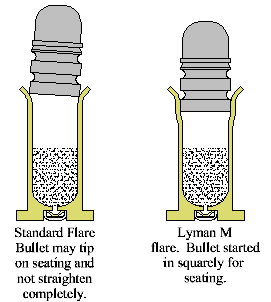Heres the scenario, 220 swift, flat based bullets, single stage press.
I got about 4000 Sierra 40grn flat base bullets to be used in 220 swift. The issue Im having is getting the bullets seated in the cases. They can be a real pian to get started. In 223 the work fine (given slow and careful stoking of the press) due to the fact the cases are in/out chamfered. BUT I then crimp (slighty) the 223 cases. On the 220 I dont crimp of course, I have chamfered the inside of the 220 cases which makes for easier starting of the bullet into the case but it leaves a tiiiiny gap around the bullet at the mouth of the case.
So should I get a crimp die to close that case mouth just ever so slightly? Bell the case? What say you guys?
I got about 4000 Sierra 40grn flat base bullets to be used in 220 swift. The issue Im having is getting the bullets seated in the cases. They can be a real pian to get started. In 223 the work fine (given slow and careful stoking of the press) due to the fact the cases are in/out chamfered. BUT I then crimp (slighty) the 223 cases. On the 220 I dont crimp of course, I have chamfered the inside of the 220 cases which makes for easier starting of the bullet into the case but it leaves a tiiiiny gap around the bullet at the mouth of the case.
So should I get a crimp die to close that case mouth just ever so slightly? Bell the case? What say you guys?

